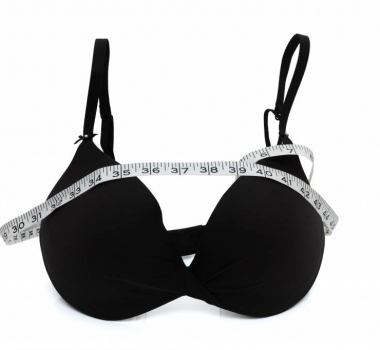Back and neck pain is one of the most common sources of pain that we treat as physiotherapists. For many women, ill-fitting bra’s can be a contributing factor towards back and neck pain. This is especially common for larger breasted women, and during or post pregnancy when breast size changes.
The weight of large breasts can create forces that pull your chest, shoulders, neck and head forward. The typical poking chin, rounded shoulders posture puts extra strain on the joints of the upper back and neck. When joints are under strain, surrounding muscles will tend to tense up. Tight neck and shoulder muscles and tension headaches can be a secondary result. Insufficient breast support contributing to poor posture can therefore result in neck, upper back, lower back pain and headaches.
How a proper bra fitting can help:
With adequate breast support, women may be able to correct these poor postures and then develop strength in the deep neck stabilisers, shoulder stabilisers and core trunk musculature. There are obviously other contributing factors to back and neck pain, but breast support is an easy one to correct.
Research supports these anecdotal findings:
A small study in 2013 of postmenopausal women found an increase in thoracic pain was associated with larger breasts. But a majority of the participants were overweight or obese. They also wore improperly sized bras. A 2012 study examined the relationship between breast size, bra cup size, and pain in participants’ shoulders and neck. Researchers concluded large cup size was an important contributor to shoulder and neck pain. A small 2008 study on breast size, bra fit, and thoracic pain in young women found 80 percent of participants were wearing the incorrect bra size. Furthermore, women with larger breasts were more likely to wear the incorrect bra size.
Exercising and support:
Exercise can further exacerbate discomfort associated with poorly fitting bras. Without adequate support, running and jumping activities will lead to increased vertical breast displacement (bouncing!). On the contrary, a well fitting, high-support bra will significantly reduce bounce and discomfort.
Other than the associated back pain, bouncing could over time result in stretching of the breast’s connective tissue and may result in breast sagging and pain. Without appropriate bra support, it’s not uncommon for women to abandon active sports due to breast pain.
Things to look for in a high-support sports bra include strong elastic back support bands, wide padded straps and full coverage cups. The team at She Science specialise in sports bra fittings and are located in Hawthorn.
Pregnancy:
During pregnancy, when underwire is not recommended, a soft cup will be necessary. This is a time to consider altering your choice of exercise and avoiding high impact exercise if breast support is inadequate.
There are many professional bra fitting services around. Your physiotherapists may be able to help determine if a bra fits correctly or if this could be a source of your pain.
If you’re updating your wardrobe and getting rid of old bras, also consider donating your old bras to one of these wonderful charity’s:
~ Sheree
References:
1. Spencer L, Briffa K, 2013. Breast size, thoracic kyphosis & thoracic spine pain – association & relevance of bra fitting in post-menopausal women: a correlational study
https://www.ncbi.nlm.nih.gov/pmc/articles/PMC3704920/
- Oo M, Wang Z, Sakakibara TM Kasai Y, 2012. Relationship Between Brassiere Cup Size and Shoulder-Neck Pain in Women
https://www.ncbi.nlm.nih.gov/pmc/articles/PMC3322448/
- Wood K, Cameron M, Fitzgerald K, 2008. Breast size, bra fit and thoracic pain in young women: a correlational study

